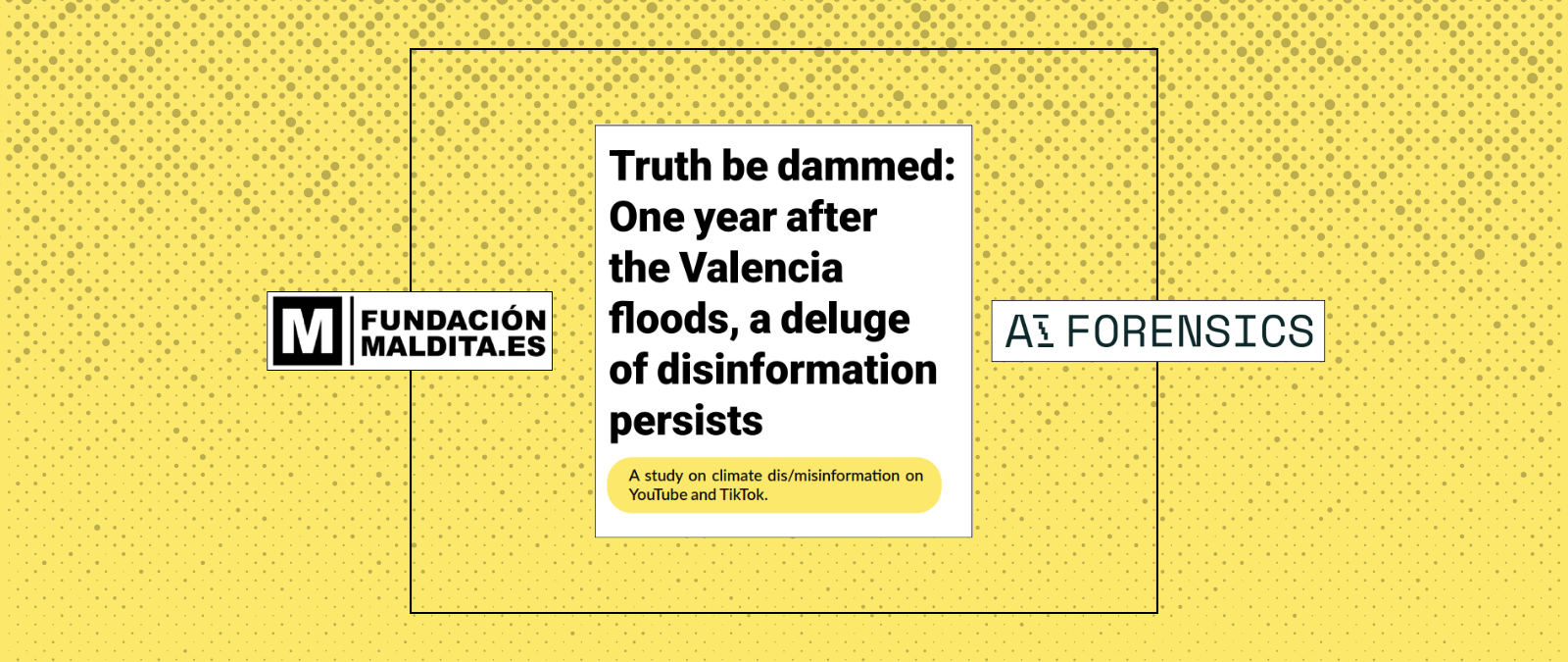In Truth be dammed: one year after the Valencia floods, a deluge of disinformation persists, Fundación Maldita.es and AI Forensics found that videos featuring dis/misinformation about the environmental disaster (known as DANA in Spanish), garnered over 21,000 views on average on YouTube, four times the usual for the platform. On TikTok, such videos averaged around 32,000 views.
This content was posted during the month after the floods but remained online one year after the event. This is despite YouTube’s commitment to providing users with “tools to help them make more informed decisions” when encountering potentially false information, and TikTok’s stated ban on “misinformation that denies the existence of climate change.”
Other key findings include:
Videos promoting dis/misinformation obtained at least 13 million views on YouTube and 8.3 million on TikTok – but the total figures are likely even greater.
On YouTube, videos discussing dis/misinformation were 48% more likely to be liked and 123% more likely to be commented on than DANA-related content overall. On TikTok, such videos were 85% more likely to be shared than DANA content generally.
Fewer than one in four videos on YouTube containing dis/misinformation contained a warning – and those that did added only a generic statement about the existence of climate change. On TikTok, none of the climate dis/misinformation identified had a warning label attached.
These findings make clear that content containing or discussing dis/misinformation garnered higher engagement and more views than that offering legitimate information about the DANA.
This further reinforces what we have long known: Climate dis/misinformation thrives on social media platforms, fuelled by systems that want to maximize screen time, engagement, and advertising revenue. Yet platforms’ efforts to address this remain woefully inadequate. And the costs are serious. Not only does this drive attention away from accurate information during moments of crisis, it also undermines much-needed action on climate change.
This study therefore underscores the urgent need for decisive steps from platforms to address the role they play in perpetuating climate dis/misinformation. While YouTube has yet to adopt a dedicated policy on the issue, TikTok appears to fall short on enforcing its own. These findings also highlight the need for both platforms to provide researchers with meaningful access to data on algorithms, to allow for further study of algorithmic amplification and monetization – both of which remain obscure and in urgent need of greater scrutiny.
